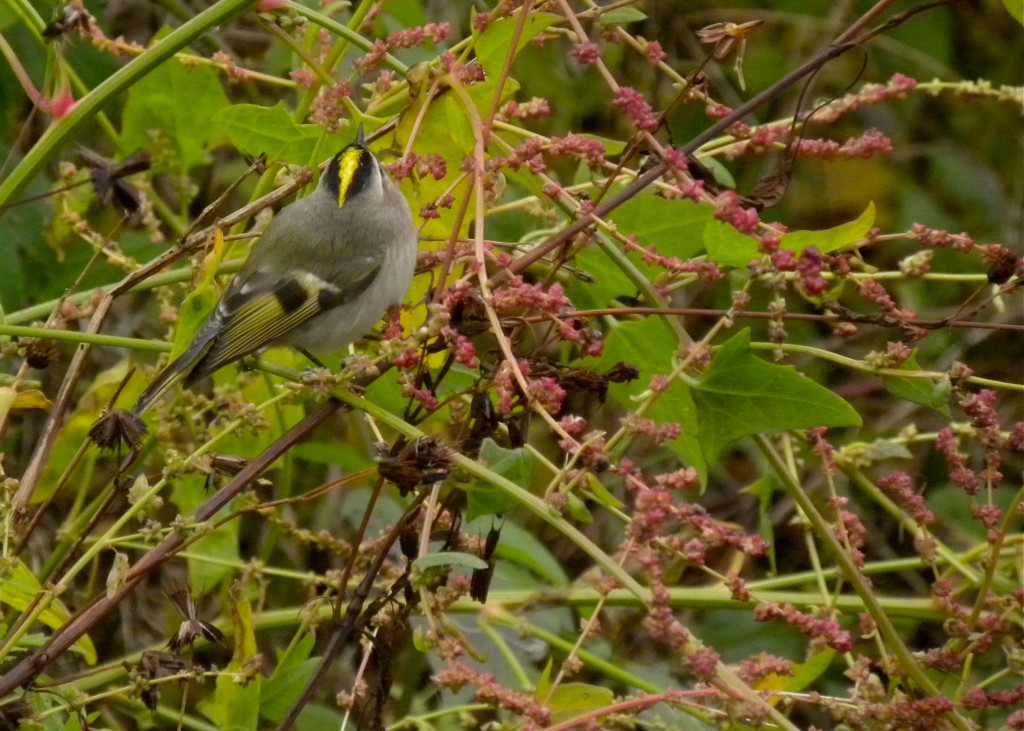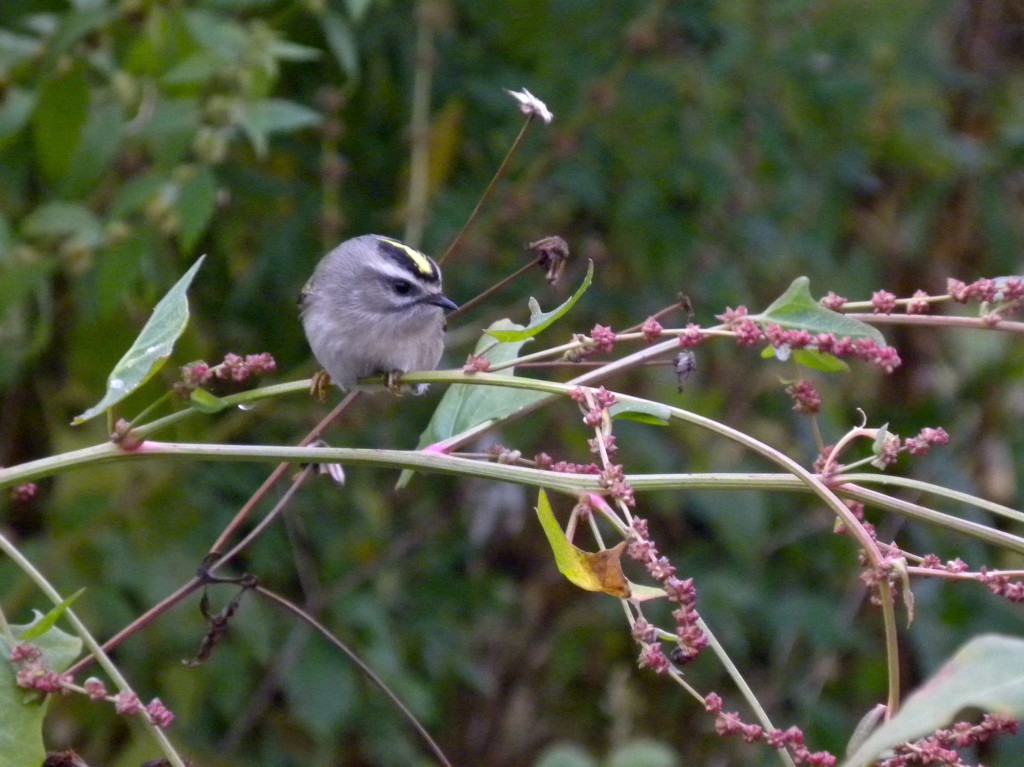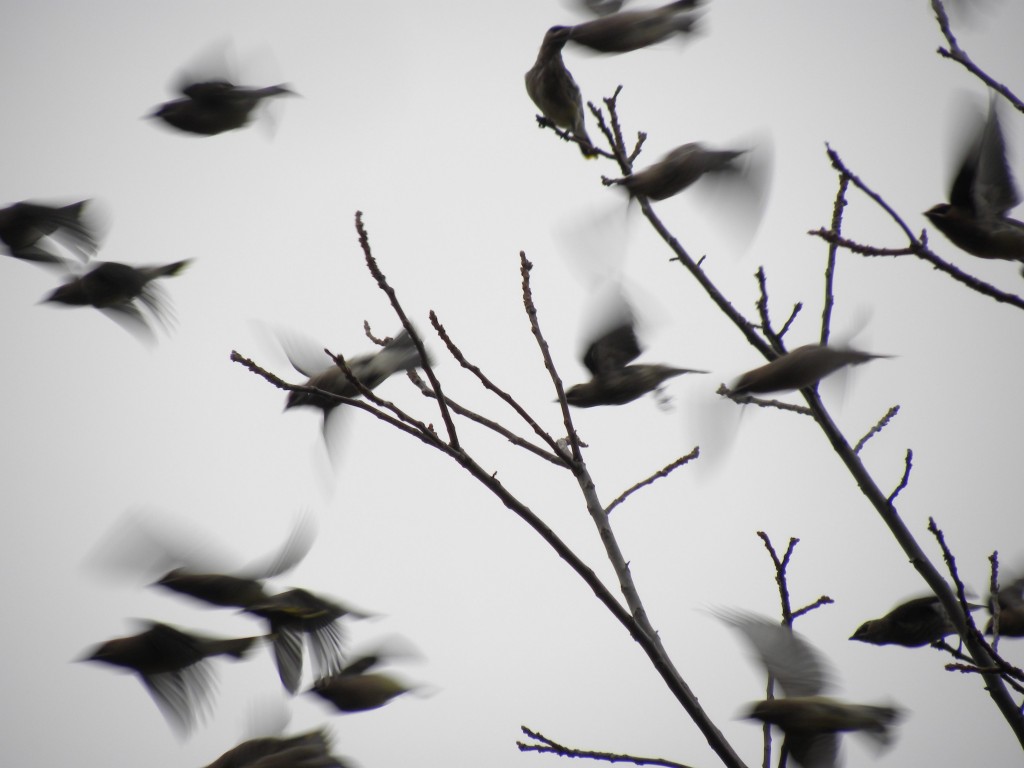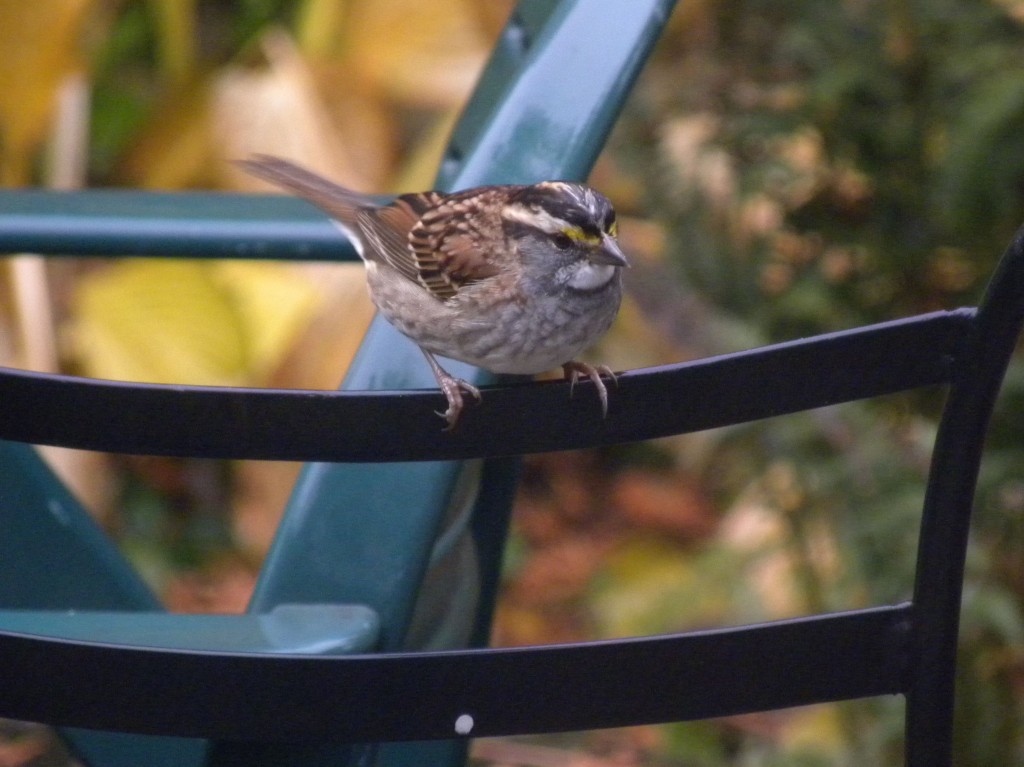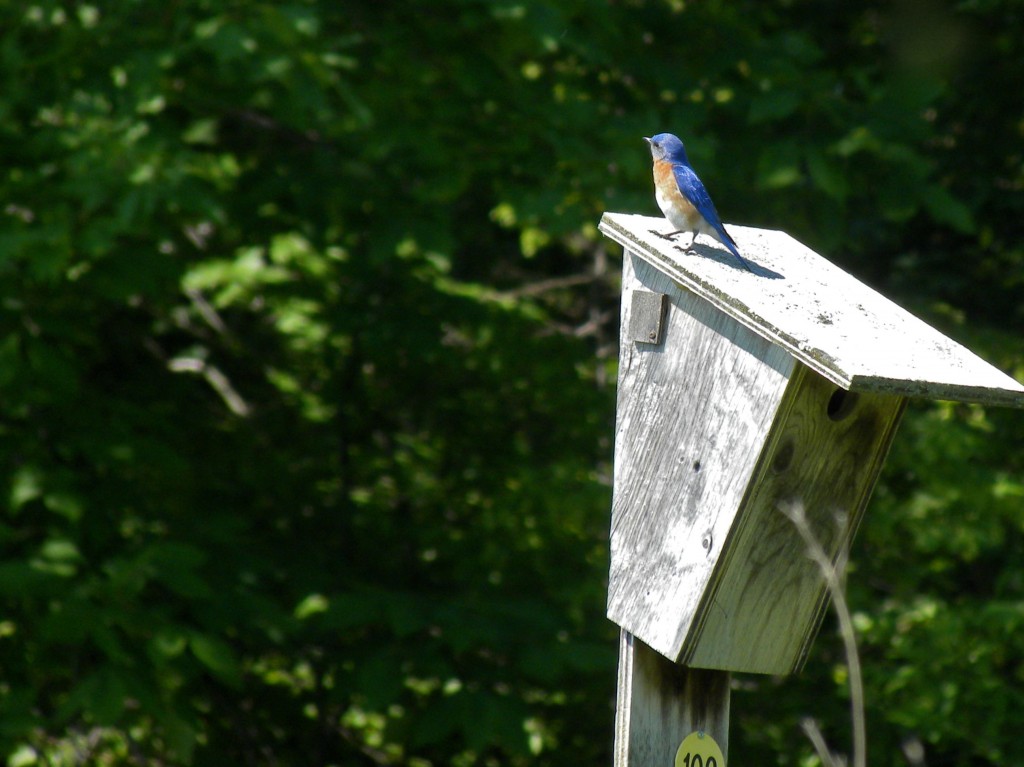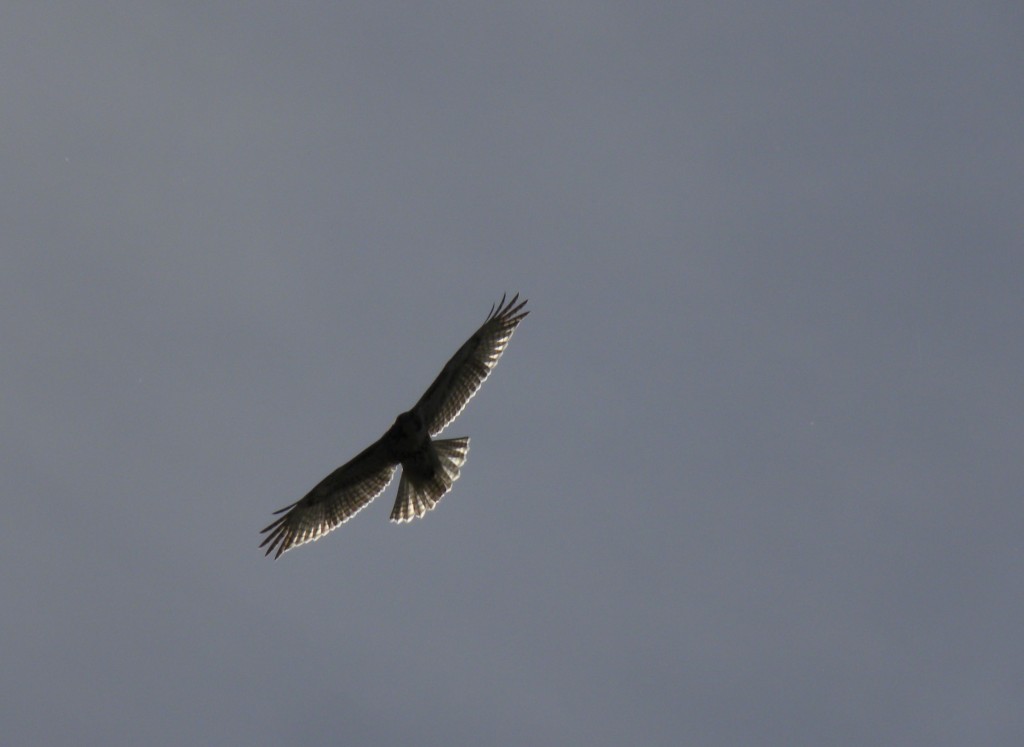October 26 2012. Ruthven Park Cayuga ON. There’s something otherworldly about high flying ducks at this time of year. Here we are stuck on the ground in the company of picnic tables, coffee cups and half eaten bagels, while up there it’s, well anyone’s guess. Where have they come from? Where are they headed to, and why? And quite often, what kind of ducks are they anyway?
This morning at the bird observatory we were doing all the usual earth-bound things, checking nets, musing about the warm weather and taking note of birds around us, when the call went up: ” Look up! Loons. Two of them heading our way. No, three of them!’ And so it was, three Common Loons flying fast and direct, heading south, they could probably see Lake Erie from where they were; and if not see it, then feel it.
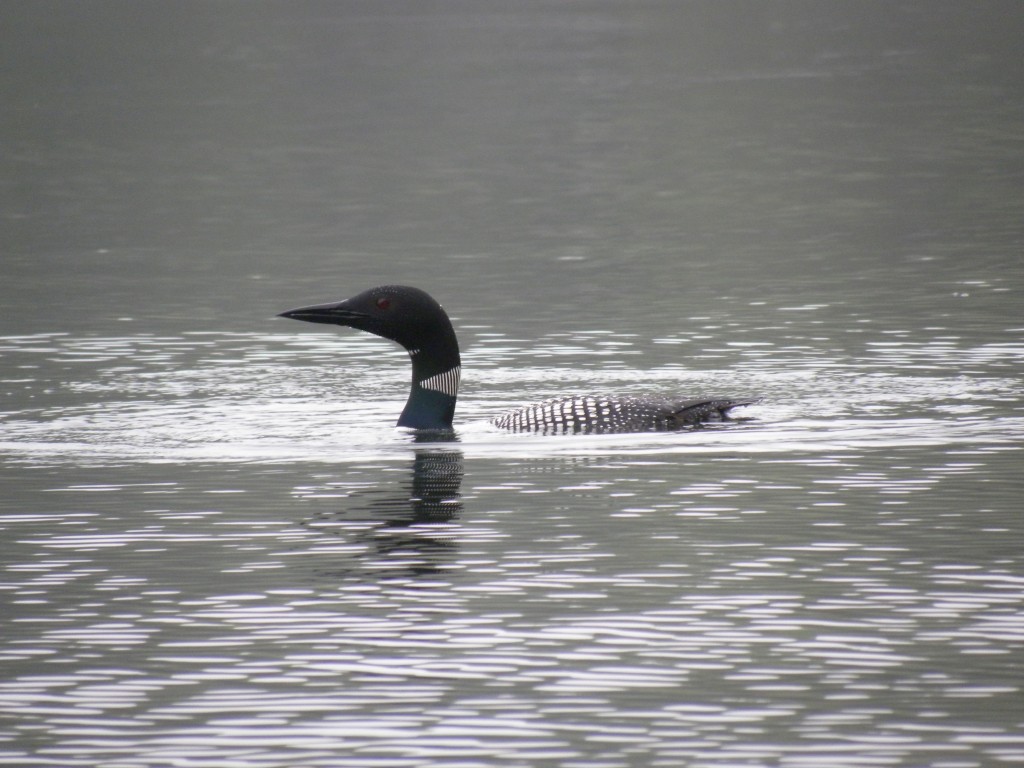
As they disappeared I said: “They’re probably the Bird of the Day.” The others seemed to agree.
That was just the start of the excitement, for moments later an Osprey and a Bald Eagle flew by just above treetop level, both illuminated so that their white heads showed a touch of salmon pink in the early sun. Then a squadron of 11 ducks in a tight V formation followed the same line as the loons, high, fast and direct. We debated the identity of them, I fancied Canvasbacks but based only on general shape, Rick thought Widgeon, so I rebutted with Unidentified Duck; we’ll never know for sure.
